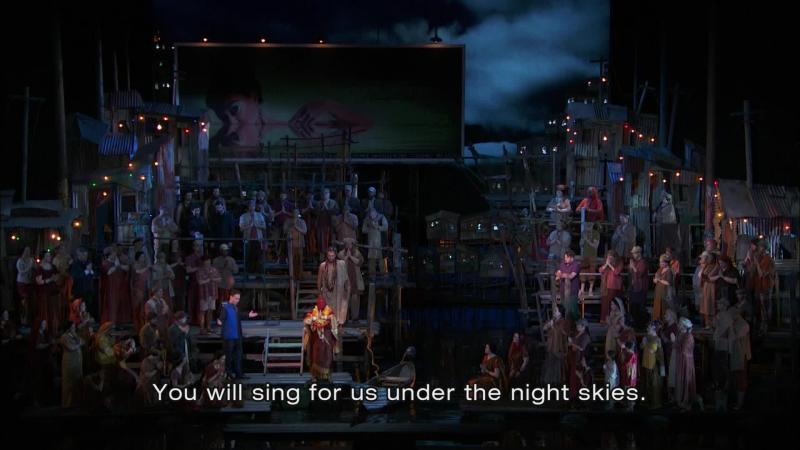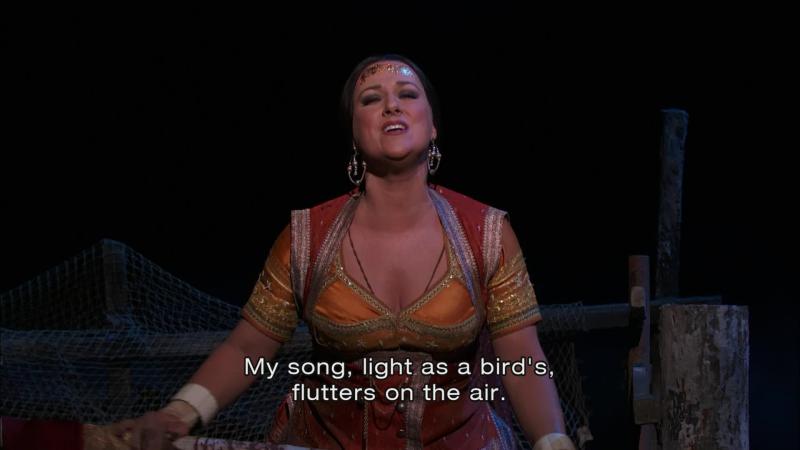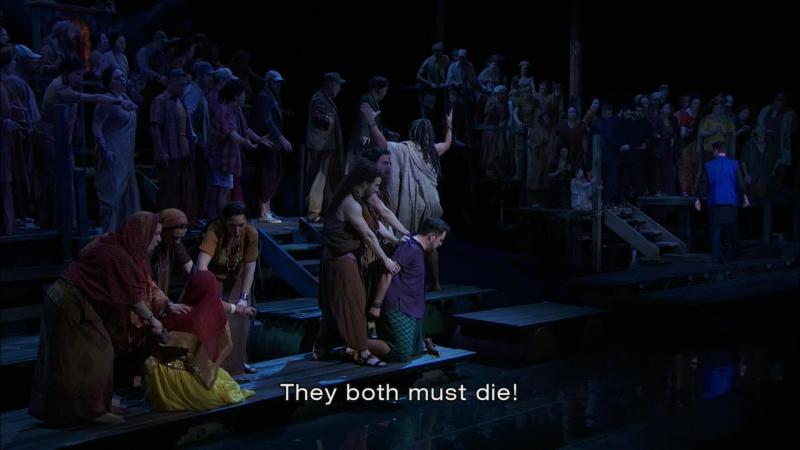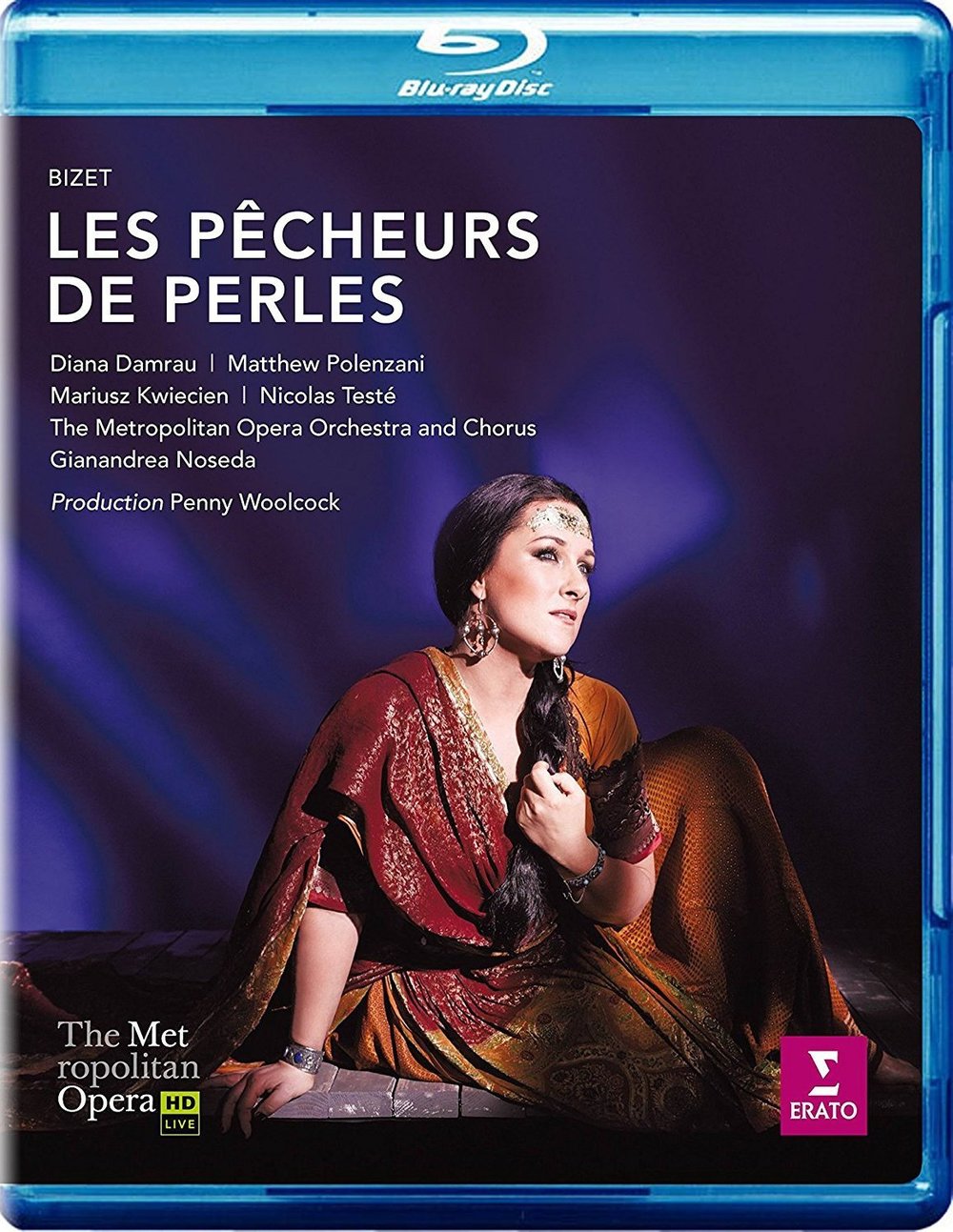
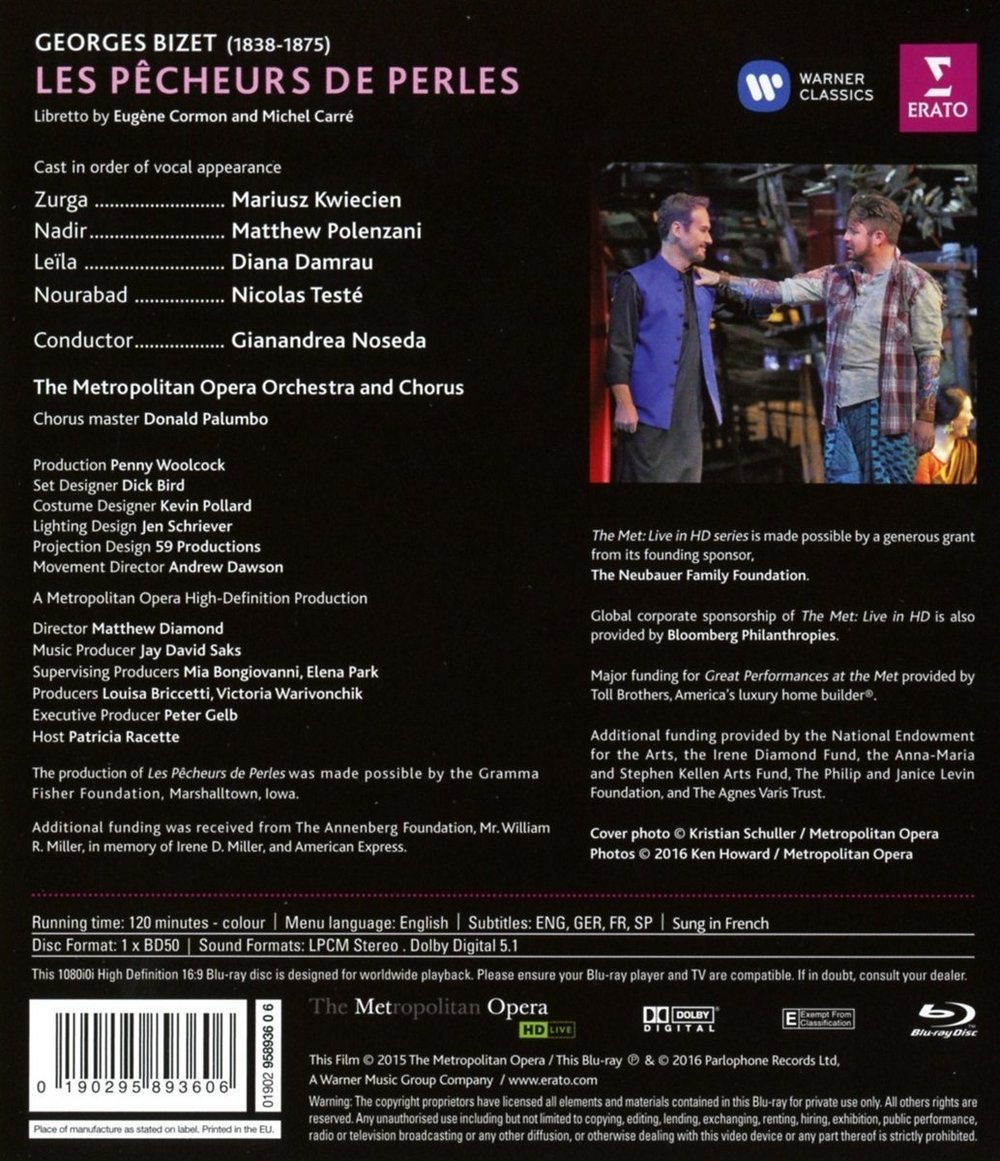
Bizet Les pêcheurs de perles (The Pearl Fishers) opera to libretto by Eugène Cormon and Michel Carré. Directed 2016 by Penny Woolcock (based on a 2010 English National Opera production). Stars Mariusz Kwiecien (Zurga), Matthew Polenzani (Nadir), Diana Damrau (Leïla), and Nicolas Testé (Nourabad). Gianandrea Noseda conducts the The Metropolitan Opera Orchestra and Chorus (Chorus Master Donald Palumbo). Set design by Dick Bird with assistance of Scott Laule; costume design by Kevin Pollard; lighting design by Jen Schriever; projection design by 59 Productions; movement direction by Andrew Dawson; fight direction by J. Allen Suddeth. Directed for TV by Matthew Diamond; music producer was Jay David Saks; Supervising Producers were Mia Bongiovanni and Elena Park; Producers were Louisa Briccetti and Victoria Warivonchik. Sung in French. Released 2017, disc has 5.1 Dolby Digital Audio. Grade: A
Most people probably think of The Pearl Fishers, with its improbable and melodramatic plot, as a work preserved forever in amber. But Woolcock's new production is a masterclass in how to dust off a forgotten piece of furniture in the attic, refinish it, and make it the centerpiece of a gorgeous new room. Woolcock opens with a stagecraft tour de force of 3 real aerialists who, suspended from a state-of-the-art new apparatus installed by the Met for this show, appear to be diving for pearls during the overture. The divers and all others involved were rewarded with sustained applause from the audience before the opera even starts:
Pearl Fishers is usually set in Ceylon in an exotic past, but Woolcock puts it in a modern seaside slum, anywhere that an Indian Ocean tsunami might strike. The set is astonishingly evocative, brilliantly lit on the front but with darker openings to the rear where billowing cloth and video projections are used to realistic and startling effect:
The superb cast is dominated by the charismatic Mariusz Kwiecien as Zurga, a slick politician on the make who will nevertheless prove to have a heart:
Suddenly Matthew Polenzani appears as Nadir, an old friend of Zurga. Nadir left town long ago when both men fell in love with the same beautiful priestess. After singing the famous "Au fond du temple saint" duet, they agree to reconcile:
The pearl fishers hired a priestess to protect the village during the stormy season. Next below is a good shot of the Met's chorus, fabulous at both singing and acting. The Met last performed Pearl Fishers about 100 years earlier, so neither the chorus nor the orchestra was familiar with the score. In a bonus extra, conductor Noseda rapturously explains how the score seemed to him like a sea full of hidden pearls to be uncovered and displayed musically. This sense of excitement comes across in the music throughout the whole recording:
The mysterious priestess must promise chastity while protecting the people:
The priestess is Leïla, played by Diana Damrau. And Leïla is, of course, the woman beloved by both Zurga and Nadir. Leïla tells the High Priest how she once as a child saved a strange man, who was being pursued by a mob, by hiding and protecting him:
Leïla was rewarded when the stranger gave her a splendid pearl for good luck. (BTW, we did a bit of research, and we don't think a pearl was in the original libretto—we think the original good-luck charm was just a "necklace." Does anyone know what the charm was called in the 2010 English National Opera production? Let's also not forget that the reward Leïla was promised for protecting the village was to be the best pearl from the harvest. So Woolcock was well in bounds in changing the neckless to a pearl pendant for a pearl of a girl.)
Fate brings Leïla and Nadir together, and they acknowledge their love:
But when the villagers discover Leïla with Nadir, the lovers are doomed:
Leïla is allowed to appeal to the chief:
And now Leïla learns the terrible truth:
On her way to execution, Leïla asks a guard to take the good-luck pearl to Leïla's mother:
Can you guess who was the man that Leïla once saved?
Zunga pays a terrible price to save the woman he loves and his old friend:
The critics loved this. Richard Lawrence, writing in the April 2017 Gramophone at page 110 says, "The opera is no masterpiece, but this production should win it many new friends." And Anthony Tommasini of the New York Times concluded, "Bizet was not convinced that this ending [setting fire to the village] was effective. If only he could have seen this production." We agree this disc shows how excellent production values, singers, and orchestral performance can make for a complete winner even if there are weak elements in the plot. So we wind up with an enthusiastic A for this title.
In the past, the Met pushed its movie-house showings and snubbed those of us interested in Blu-ray discs. Now it's encouraging to see how the Met released this quickly in Blu-ray. We keep hearing how the Met is hard up to increase revenues. Maybe they will soon be offering the HT crowd more of their treasures.
Here are a couple of YT clips:
OR






